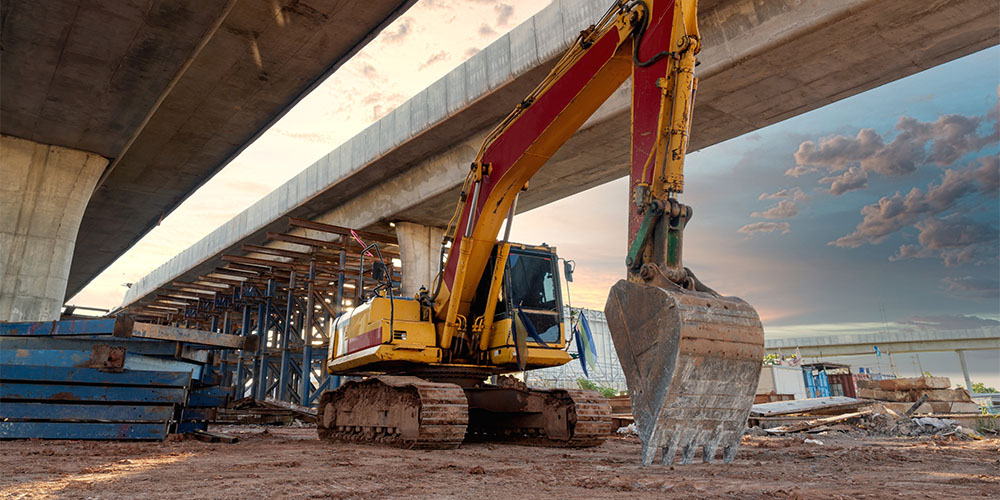— 10 min read
Preconstruction Partnerships: How Safety Pros Can Collaborate with Estimating & Proposal Teams
Last Updated Apr 29, 2025
Last Updated Apr 29, 2025

Construction leaders and safety professionals are developing a strong understanding of how safety programs positively impact project outcomes. When safety is woven into every aspect of operations from pre-construction to post-completion, projects are safer — and that means they are more cost-effective and efficient.
Safety can be incorporated into operations during the preconstruction phase — specifically in the estimating, bidding and proposal processes. This allows construction firms to proactively reduce risk, prevent accidents and delays and enhance their reputation with partners and owners.
This article explores practical advice for safety professionals who are looking to establish strong collaboration with their estimating, bidding and proposal teams.
Table of contents
5 Ways to Collaborate on Estimating and Bidding
When safety professionals develop a collaborative relationship with teammates in estimating and bidding, project planning can become much more successful, creating favorable circumstances throughout the entire lifecycle of each project.
Safety professionals should look at the estimating and bidding phase as an opportunity to set up the project team for safety success by anticipating challenges, planning ahead, avoiding problems by organizing resources efficiently.
It's great when safety is involved during the early stages. I honestly feel that in my career, getting involved with the estimating team was where safety really started to be a part of the overall company culture...We were finally getting somewhere with safety where things were connecting. That lifecycle — of being proactive, seeing safe practices carried out at the jobsite, understanding lessons learned at the end and carrying those lessons forward to future projects — it really started to make things come together for people.
Abby Ferri
Senior Leader
National Safety Council
Here are some specific areas where safety managers can assist with estimating and bidding to contribute to project success.
1. Evaluate long-term vs. short-term safety investments.
When planning projects, safety professionals should consider the transferability of safety equipment from one site to another, assess whether to purchase or rent safety equipment for each project, and budget for short-term consumables such as personal protective equipment (PPE) and fall protection.
Teams need to account for both long-term safety equipment that can be purchased and used at multiple jobs, as well as short-term consumables at new projects.
It's just as important to look at the jobs that are coming up. It can simplify projects when a team has already accounted for, for example, a deep trench or high walls, and they have the necessary equipment.
2. Forecast client-specific safety requirements that could impact the budget.
Anticipating client-specific safety requirements helps avoid potential delays and additional costs. For example, a project owner may require that everyone on the jobsite has completed OSHA 10 within the past year. If that isn’t planned ahead of time, it could delay the project’s start. But knowing this in advance allows you to make sure everyone is compliant and ready to start.
3. Consider innovative construction methods to reduce safety risks.
Pro Tip
If there's space in a lay down yard where workers can build on the ground and then lift into place, it saves cost and increases safety by limiting the exposure of people working at heights. Ideally, a construction firm works out the problems and funds the solution ahead of time.
For each project, safety professionals should explore various methods to reduce costs by forecasting and mitigating risk. Then, they should consider investing in solutions to foreseeable challenges. For example, if a project involves heights but also has an area of space, a laydown yard could be considered.
4. Analyze staffing needs for each project — including safety personnel.
Safety professionals should help examine staffing needs to understand how project complexity affects staffing decisions, including specific roles that might be needed and accommodating shifts. Doing so will help leaders reveal if the company should hire and train new staff, if new subcontractor partnerships need to be established or if collaborations with unfamiliar unions or trades should be explored. This upfront work helps ensure adequate resources are in place so that projects run smoothly without slowdowns or interruptions.
5. Identify training or certification requirements for upcoming projects.
During the estimating process, safety professionals should work closely with their internal teams to understand if staff will need specific supervision, if new certifications will be needed, or if safety training should be provided to crews.
You want to match someone with safety expertise to the specific kind of work. If you're bidding on a complicated job, consider the crew selection—not only the people that are doing the work, like the trades workers, but also the people and management. Is this their first time on this type of job or this size of a job? Consider if maybe they need another project engineer, project administrator or an executive to be a mentor.
Abby Ferri
Senior Leader
National Safety Council
Safety professionals should also advocate for space they might need onsite to store safety materials or conduct training. Allocating a budget for a trailer will help keep materials organized and safe from environmental conditions. A trailer should also be considered to serve as office space if training will need to be provided to numerous staff. If the budget is tight, a container can also serve as an economical alternative.
Build a Strong Foundation with our Preconstruction Course
With 20+ years of experience, Ben Ashburn teaches you how to streamline planning, bidding, and procurement for better outcomes.

Tips for Collaborating on Proposals
In construction, proposals allow companies to go beyond a simple cost breakdown and instead showcase their unique strengths, capabilities and innovations. Proposals also allow firms to differentiate themselves in competitive markets and align their bids more closely with client needs and project goals.
Safety professionals can strengthen the proposal process by providing up-to-date safety performance metrics and content that highlights success. Safety professionals should also make sure to review marketing materials to double check they demonstrate safety accurately and effectively.
Safety professionals have the opportunity to help people understand the company's safety performance and where you benchmark against other companies. You can help them use the right language and highlight the right things.
Abby Ferri
Senior Leader
National Safety Council
The following are some specific tips for safety professionals to assist with proposals.
Provide annual safety performance metrics.
At the beginning of every year, safety professionals should evaluate their safety metrics and keep an accurate record for the company. While doing so, safety professionals should make a habit of providing these metrics to proposal teams and meeting with them to help them understand how safety performance can be highlighted in proposals.
A safety professional should be able to look at their safety program and accomplishments. They should have an understanding of the industry and competitors and know what to point out that's above and beyond.
Pro Tip
If bidding documents require a three-year history, providing metrics for a five- or ten-year period might be considered, especially if a company experienced a dip in metrics during the past few years. This way, a more positive story can be woven to show how far the company has come.
Sometimes, these metrics are specifically requested from project owners. A few common metrics include:
- TRIR (Total Recordable Incident Rate): The number of recordable incidents per 200,000 work hours, indicating overall workplace safety performance, derived from the company’s OSHA 300 Log
- DART (Days Away, Restricted, or Transferred): Workplace injuries recorded on the company’s OSHA 300 Log that result in days away from work, job restrictions or transfers, indicating the severity of workplace incidents
- EMR (Experience Modification Rating): A factor used by insurance companies to gauge past cost of injuries and future risk, influencing workers' compensation insurance premiums and often used to prequalify contractors, usually must be less than 1.0.
Provide content that highlights safety success.
Throughout the year, safety professionals should keep a marketing-mindset, being aware and keeping track of projects and performance that showcase the company’s dedication to safety, quality and efficiency. Putting successful teams in place, using innovative solutions and employing safety technology are great examples of different narratives that can allow project owners to really get to know a construction company and the humans behind it.
Safety professionals should be helping proposal teams understand the story behind the safety program, and making it come alive a bit more than just the numbers and the metrics. Showing activities your people are doing — for example if your annual training gets 100 percent attendance — or highlighting proactive metrics and not just reactive data that's going to be asked for anyway. You want to tell your story in a narrative way to set the company apart from peers.
Abby Ferri
Senior Leader
National Safety Council
Review marketing materials for safety compliance.
Finally, once proposals and marketing materials are created, safety professionals should ask to be included in the review process before they are shared or published. Safety is often not considered as a necessary check-point, but can be a valuable resource for making sure mistakes don’t happen.
When putting together images to tell a story, marketing should always run them by the safety professional to ensure accuracy in marketing assets. It's always great to use real project depictions, but make sure that they pass the safety test.
How to Create Continued Collaborative Success
To make sure safety is consistently woven into operations and is continued as a standard practice, safety professionals should establish open communication channels between teams, maintain collaboration throughout project lifecycles and be assertive along the way.
Establishing open communication.
Pro Tip
Safety managers and directors should be meeting regularly with the estimating team to find out what jobs are on the horizon and how different it is from the work that they currently do. It’s important to prevent surprises when, for example, the firm is bidding on high-rise residential apartments versus their previous experience of building single-family homes in tracts.
Safety professionals can streamline the communication process by looking at already-established rhythms where safety could make a contribution.
This can be as simple as attending bid meetings that are already on the calendar and participating in conversations, providing important insights from a safety perspective. In these meetings, safety professionals should seek a deeper understanding of upcoming jobs in order to anticipate safety needs and provide guidance for how safety can be integrated into all stages of a project.
Maintain consistent collaboration.
Ongoing collaboration will go a long way in changing the dynamic of how projects are planned and executed. To do so, safety professionals should be intentional about allocating their time and providing safety expertise equally with upcoming bids, active projects and projects that are about to close out.
If safety is successfully integrated into processes, that means that a safety director or safety manager is equal parts focusing on jobs that are about to be bid, jobs that are going on and jobs that are wrapping up.
The more frequently a safety professional lends guidance that leads to efficiency and safer outcomes, the more likely it is that everyone in the organization will see safety as an asset in all operations.
Be assertive.
In some areas of construction business, safety can be mistaken as a roadblock or hindrance to efficiency.
However, this mindset can be shifted by demonstrating that safety should be considered as guardrails – preventing people or processes from going outside the boundaries creating unnecessary risk, helping processes run smoothly and keeping projects on track and progressing in the right direction.
To create a collaborative approach, safety professionals must learn how to influence other staff members without having direct authority over them. Safety professionals who learn to be assertive will have success.
In the beginning, my approach is to say ‘I can help with this,’ or ‘My input will be helpful here.’ Once you’ve done that a couple times successfully, you'll get the invitations to recurring project meetings and forecast meetings. Then, once you’re consistently in the loop, your information is becoming valuable and understood.
Abby Ferri
Senior Leader
National Safety Council
Outcomes of Effective Safety Collaboration in Preconstruction
It’s no secret that favorable outcomes will be achieved when construction companies work to break down silos, establish effective collaboration and create highly integrated teams. And that extends to safety, bidding, estimating and proposals.
When safety professionals partner with colleagues in these specific areas of preconstruction, they’ll be able to proactively anticipate and solve problems, ensure bids incorporate risk prevention and safety costs, enhance proposals with compelling safety metrics and put resources in place for smooth and efficient projects.
Was this article helpful?
Thank you for your submission.
0%
0%
You voted that this article was . Was this a mistake? If so, change your vote here.
Scroll less, learn more about construction.
Subscribe to The Blueprint, Procore’s construction newsletter, to get content from industry experts delivered straight to your inbox.
By clicking this button, you agree to our Privacy Notice and Terms of Service.
Categories:
Tags:
Written by
Abby Ferri
Abby Ferri is an influential and award-winning expert in global risk management and worker safety with more than two decades of experience. She is a passionate advocate for advancing women in EHS leadership, ethical technology integration, and STEM education, co-founding the globally recognized "Safety Justice League" podcast and authoring two books. Abby also serves as an adjunct professor and is active in her local community, contributing to advisory groups focused on thoughtful AI strategy and equitable access to STEM careers. Her leadership and innovative approaches continue to shape the future of workplace safety and education.
View profileLindsey Salmony
Lindsey Salmony is a writer and marketing manager with a passion for finding and celebrating the human stories behind resilience and innovation. Her work has appeared in various publications including Engineering News Record, CFMA’s Building Profits Magazine, Industry Dive, AHP’s Advancing Philanthropy, and The Giving Institute’s Member Insights Blog. A native of New England, she has a proven track record of successfully navigating cars through rotaries and cracking lobsters at the dinner table. Outside of the office, she can be found alongside her husband cheering for her children in team sports and championing their growth mindsets.
View profileExplore more helpful resources

Estimate vs. Budget: Tools to Guide Construction Financial Planning
Whether building a residential home, a commercial complex or a large-scale infrastructure development, understanding and managing costs is key to completing a project on time and within financial limits. Effective...

Key Types of Estimates in Construction
The challenge of determining the cost of building a construction project can seem like an impossible task. Considering the unique nature of each project and the fact that material and...

Construction Estimating Methods: Techniques for Predicting Costs with Confidence
While construction is an industry that relies on technical prowess and accuracy, it also regularly uses guesswork. Both general contractors and specialty contractors have to estimate how much a project...

Heavy Civil Construction Estimating: Strategies and Challenges
Accurately estimating the costs of heavy civil construction projects requires a comprehensive understanding of the unique challenges and complexities involved. From vast project scopes to intricate regulatory requirements, heavy civil...